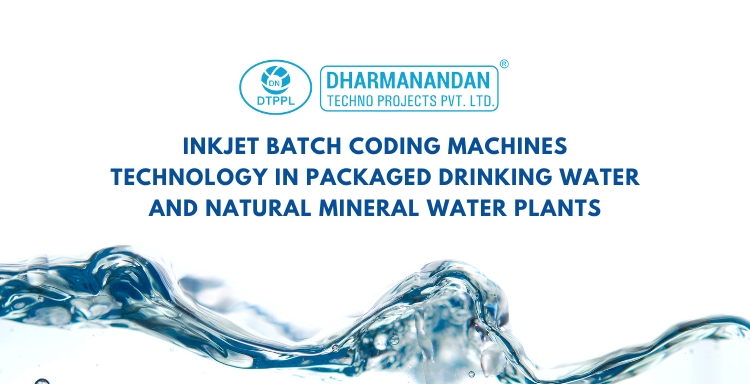
Table of Contents
Inkjet Batch Coding Machines Technology in Packaged Drinking Water and Natural Mineral Water Plants
February 7, 2025
In the packaged drinking water and natural mineral water business, Inkjet batch coding is more than a critical process that ensures traceability, quality control and regulatory compliance. At the heart of this operation, the fully automatic inkjet batch coding machines are remarkable systems that seamlessly apply essential information such as manufacturing dates, expiry dates and batch numbers directly onto products or their packaging.
This article will explore indispensable machines. We will delve into the intricate technologies that drive them, examine the science behind the inks they use and uncover the sophisticated automation and control systems that ensure every product carries its mark of quality.
The Fully Automatic Inkjet Batch Coding Machine
These systems integrate into high-speed production lines to print clear, legible codes on a diverse range of substrates-all with minimal human intervention.
They operate continuously, adjusting automatically to different product types, line speeds, and environmental conditions, ensuring uninterrupted coding accuracy.
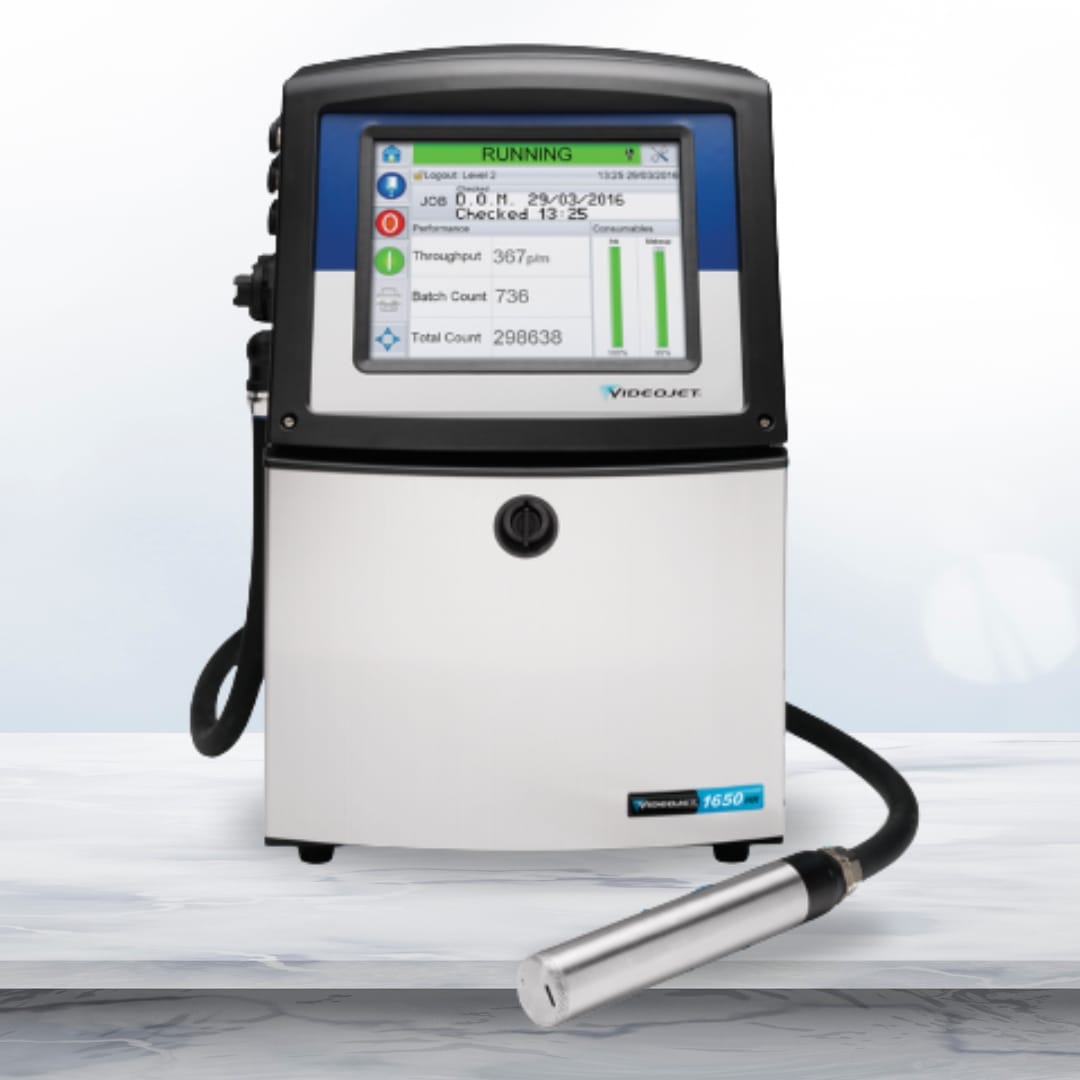
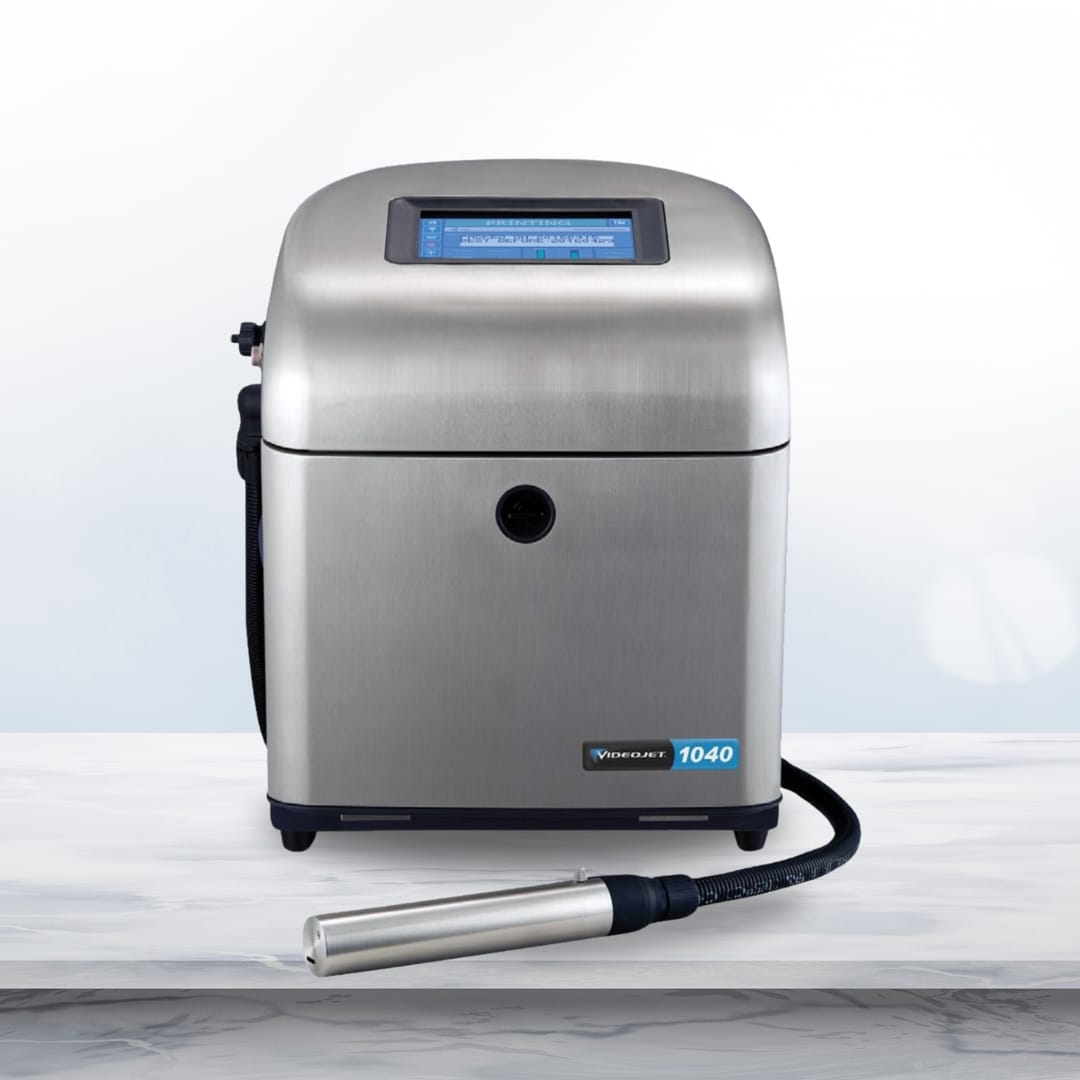
1. Choosing the Right Inkjet Batch Coding Technology
The power of these machines lies in their inkjet technology, which comes primarily in two forms: Continuous Inkjet (CIJ) and Drop-on-Demand (DOD).
Continuous Inkjet (CIJ)
CIJ printers continuously generate a stream of ink droplets by harnessing the Plateau-Rayleigh instability-a natural phenomenon where a liquid jet breaks up into uniformly sized droplets.
- Droplet Dynamics and Charging:
- Piezoelectric Crystal Actuation: Vibrations from piezoelectric crystals are fine-tuned in terms of frequency, amplitude and waveform, ensuring each droplet is uniform in size and spacing. These vibrations must be precisely controlled to avoid inconsistencies in droplet formation, which can impact print clarity and positioning.
- Charge Electrode: Droplets receive a controlled electrical charge from precisely designed electrodes, which then direct them to the correct position.The voltage applied to these electrodes determines the deflection distance of each droplet, ensuring high-precision printing.
- Managing Satellite Droplets: Advanced CIJ systems employ specialized waveforms to minimize unwanted, tiny satellite droplets that could affect print quality. By adjusting waveform modulation, these systems prevent excess ink splatter, leading to sharper and cleaner print results.
- Deflection and Ink Recirculation:
- Electrostatic Field Dynamics: Uniform electric fields generated by deflection plates ensure accurate placement of the charged droplets. Proper calibration of these fields is necessary to maintain accuracy across high-speed production lines.
- Gutter System: Unused droplets are captured by a vacuum-assisted gutter system, filtered and recirculated to reduce waste. The recirculation system also includes ink filtration to remove contaminants and prevent nozzle blockages.
- Advantages: CIJ excels in high-speed environments and can print from a distance-ideal for curved or uneven surfaces. This capability makes CIJ suitable for industries where products vary in shape and size.
- Challenges: However, its complexity requires regular maintenance, such as cleaning nozzles and managing solvent-based ink evaporation. Proper ventilation and solvent management are essential to ensure compliance with environmental and safety regulations.
Drop-on-Demand
Unlike CIJ, DOD printers produce ink droplets only when needed. This can be achieved through:
- Process Specifics:
- Piezo DOD: The deformation of piezoelectric crystals, controlled by optimized electrical signals, ensures consistent droplet ejection and minimizes the formation of satellite droplets. By fine-tuning the actuation voltage, DOD printers can achieve ultra-fine printing resolutions.
- Thermal Inkjet: Here, the design of thin-film resistors and the controlled formation and collapse of vapor bubbles are key to achieving reliable droplet formation. This method is best suited for applications requiring high-definition text and barcodes.
Specifications and Trade-Offs:
- DOD systems offer high-resolution printing and simpler designs that typically require less maintenance. However, they are generally slower than CIJ and must operate at a closer distance to the substrate.
- They are particularly advantageous for industries requiring fine-detail prints, such as pharmaceuticals and electronics.
- However, they are generally slower than CIJ and must operate at a closer distance to the substrate.
- This limitation makes them less suitable for high-speed bottling and packaging lines.
How to Choose the Right Inkjet Batch Technology?
The decision between CIJ and DOD hinges on several factors:
- Production Speed of Inkjet Machine: CIJ is optimal for high-speed lines.
- Print Quality and Resolution of Inkjet Batch: DOD often provides finer detail of resolution and superior print quality.
- Inkjet Coding Provides Substrate Characteristics: Considerations include the surface type, texture and required throw distance.
2. Ink Chemistry: The Science of Adhesion and Legibility of Inkjet Batch Coding Machine
The quality and durability of the printed code are as much a result of the ink as they are of the machine.
Solvent-Based Inks: Different Mechanisms
- Solvent Selection:
Solvents such as methyl ethyl ketone, acetone or ethanol determine the drying time and adhesion properties. They are chosen based on how quickly they evaporate and the strength of the bond they form with non-porous surfaces like PET bottles. - Resin Systems:
Resins in solvent-based inks ensure the durability of the print. They provide resistance to abrasion, chemicals and environmental factors. - Surface Wetting:
The interaction between the ink’s surface tension and the substrate’s surface energy is critical.
Water-Based Inks: Environmental Drying Conditions
- Formulation:
Water-based inks often incorporate co-solvents and additives to adjust viscosity, improve drying times and ensure compatibility with porous substrates. - Absorption and Drying:
Unlike solvent-based inks that dry through evaporation, water-based inks absorb into the substrate, which can be affected by ambient humidity.
UV-Curable Inks: Photopolymerization in Action
- UV-Curing Process:
When exposed to specific wavelengths of UV light, photoinitiators in the ink trigger rapid polymerization. This crosslinking process locks in the ink, ensuring high durability and chemical resistance.
Pigment vs. Dye-Based Inks
- Pigment Inks:
Provide high contrast and are highly resistant to fading. They require careful dispersion to avoid clogging. - Dye-Based Inks:
Offer brighter colors but may be prone to smudging and fading over time. - Key Properties:
Ink viscosity, shear thinning behaviour and surface tension all play roles in how well the ink is delivered and how cleanly droplets are formed.
3. Inkjet Batch Machine Enhances Automation and Control in Packaged Drinking Water
Modern inkjet coding machines rely on sophisticated automation to ensure each printed code is applied with precision and consistency.
Printhead Positioning and Motion Control of Inkjet Machine
- Multi-Axis Control:
Servo motors and high-quality linear guides work together to position the printhead with extreme accuracy. This ensures that even on curved or irregular surfaces, the printing remains precise. - Sensor Technologies:
- Photoelectric Sensors: Use light beams to detect products with high precision.
- Ultrasonic Sensors: Ideal for detecting transparent or irregularly shaped items.
- Capacitive Sensors: Efficient in recognizing products made from plastics or liquids.
Inkjet Batch Coding Encodes Integration and Speed Synchronization
- Real-Time Feedback:
Quadrature encoders monitor the speed and position of the production line, allowing the system to adjust the timing of droplet ejection to match line speeds seamlessly.
User Interface (HMI) and Data Management
- Touchscreen controls simplify machine operation.
- Connectivity with ERP systems enables real-time data updates.
- Barcode and RFID compatibility improves traceability.
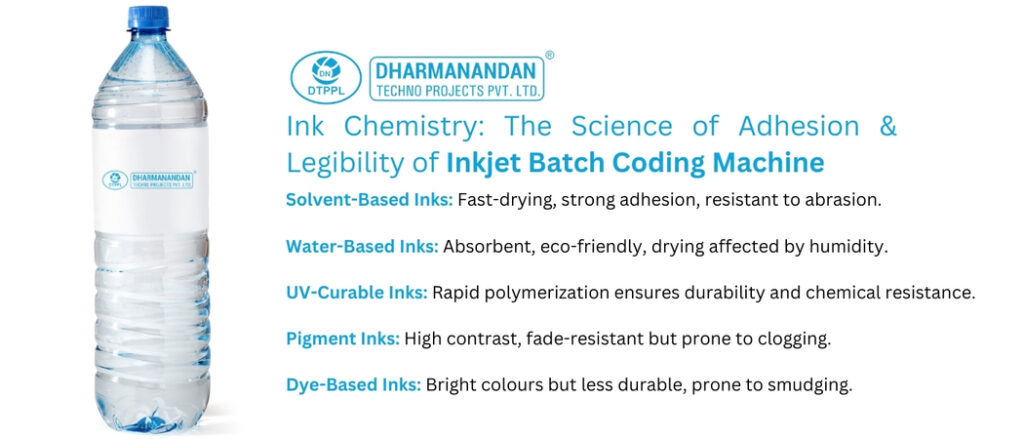
4. Maintenance and Reliability of Inkjet Batch Coding Machine in Packaged Drinking Water & Natural Mineral Water Plant
A batch coding machine requires regular maintenance to operate efficiently.
Automated Cleaning Cycles
- Prevents ink buildup and nozzle blockages.
- Uses solvent flushing and purge functions to keep the system clean.
Preventive Maintenance
- Ink filters need periodic replacement to prevent contamination.
- Routine inspections of pumps, valves and sensors ensure reliability.
Advanced Diagnostics and Troubleshooting
- Real-time error alerts help operators resolve issues quickly.
- Remote diagnostics allow manufacturers to provide support remotely.
Key Components and its Functions of Inkjet Coding Machine in Water Packaging Plant
1. Ink Delivery System of Inkjet Coding Machine
A reliable ink delivery system is essential to maintain uninterrupted operation and consistent print quality.
- Ink Reservoir:
Beyond simply holding ink, reservoirs feature level sensing and agitation mechanisms to keep pigmented inks evenly mixed. - Pumps:
- Gear Pumps: Ideal for CIJ printers, they handle a range of viscosities while generating high pressures.
- Diaphragm Pumps: Common in DOD systems, these provide gentle, controlled ink flow, preserving the integrity of delicate inks.
- Peristaltic Pumps: With their precise, rolling action, these pumps minimize shear stress on ink, ensuring consistency.
- Filters and Tubing:
Tubing and fittings are selected for chemical compatibility and designed for leak-proof connections, safeguarding the system from spills and contamination.
2. Control System of Inkjet Coding Machine
At the center of the machine’s operation is a robust control system that processes data in real time.
- Inkjet Coder Machine Central Processing Unit:
Often built on a real-time operating system, the CPU handles complex algorithms for motor control, sensor input and droplet timing with remarkable speed and accuracy. - Firmware and Application Software of Inkjet Machine:
The embedded firmware manages low-level functions, while higher-level application software allows operators to program print messages, monitor performance and integrate the system with enterprise resource planning software. - Human-Machine Interface (HMI):
Featuring intuitive touchscreen displays and user-friendly menus, modern HMIs not only simplify machine operation but also provide vital information such as print speed, ink levels and real-time diagnostics.
3. Sensors and Actuators of Inkjet Code Machine: The Eyes and Hands of the System
Precision printing relies on accurate detection and rapid response. Sensors and actuators form the feedback loop that keeps the system in perfect harmony.
- Product Detection Sensors:
- Photoelectric, Ultrasonic and Capacitive Sensors: These detect the presence, position and even the shape of products on the production line. Proper mounting and alignment of these sensors are essential for reliable performance under varying environmental conditions.
- Encoders:
High-resolution quadrature encoders monitor the motion and speed of the production line. Their accurate feedback enables dynamic adjustments in droplet ejection timing. - Level Sensors:
Critical for ensuring the ink reservoir never runs dry, these sensors monitor ink levels to prevent interruptions in printing. - Actuators:
Servo motors, solenoid valves and pneumatic actuators execute precise movements – from positioning the printhead to controlling the flow of ink – ensuring that every command from the control system is carried out flawlessly.
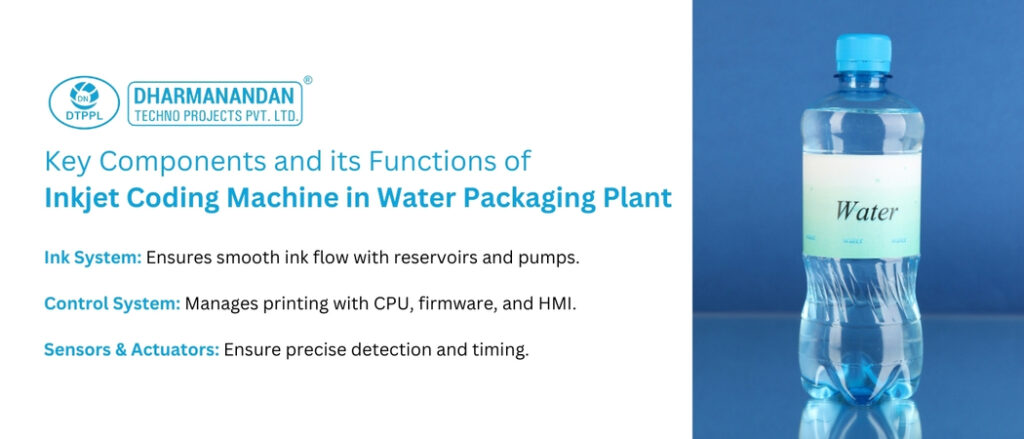
Applications and Industries: Where Inkjet Batch Coding Machine Makes its Mark?
Fully automatic inkjet batch coding machines are not confined to the beverage industry. Their versatility makes them indispensable across various sectors:
Food & Beverage
- From printing expiration dates and lot numbers on bottles, cartons and pouches to specialized applications like coding on eggshells or cheese rinds, these machines ensure every product is traceable and compliant with food safety standards.
Pharmaceuticals
- Accurate coding of lot numbers, expiry dates and serialization codes on medicine bottles and blister packs is crucial for regulatory compliance and counterfeiting prevention.
Cosmetics & Personal Care
- With the need to print ingredient lists, manufacturing dates and batch numbers on tubes, bottles and jars, inkjet coding machines cater to products with varying shapes and textures.
Other Industries
- Electronics: Coding circuit boards with serial numbers.
- Automotive: Marking components with identification numbers.
- Building Materials: Printing specifications on pipes and cables.
Advantages of Fully Automatic Inkjet Batch Coding in Natural Mineral Water Plant
Integrating these advanced coding machines into mineral water plant production lines offers a host of benefits:
- High-Speed Operation:
Seamless integration into high-speed lines minimizes bottlenecks, ensuring that every product is marked efficiently. - Non-Contact Printing:
The non-contact nature of inkjet printing preserves delicate surfaces, reducing the risk of damage. - Versatility Across Substrates:
Whether printing on smooth plastics, rough surfaces, curved containers or even transparent materials, these machines adapt to a wide variety of applications. - Enhanced Brand Image:
Consistent, high-quality coding reinforces a company’s reputation for quality and precision, leaving a lasting impression on consumers.
Key Advancements of Fully Automatic Inkjet Batch Coding in Drinking Water Packaging
- Integration with Industry 4.0: Machines now feature IIoT (Industrial Internet of Things) capabilities, allowing real-time monitoring and predictive maintenance.
- Eco-Friendly Inks: Manufacturers are developing low-VOC and bio-based inks to reduce environmental impact.
- Security Enhancements: New invisible inks and serialization features improve anti-counterfeiting measures.

Conclusion: A Cornerstone of Modern Manufacturing
Inkjet batch coding machines play a vital role in packaged drinking water and natural mineral water production, ensuring that each product is accurately marked and compliant with industry regulations. By integrating advanced printing technologies, durable ink formulations, and automation systems, these machines enhance efficiency, reliability, and traceability in modern manufacturing.
With continuous advancements in ink chemistry and automation, inkjet batch coding will remain an essential component of high-quality, large-scale production in the years to come.
Looking for a reliable inkjet batch coding solution for your packaged drinking water plant? DTPPL offers cutting-edge coding and marking solutions tailored to your production needs. Contact us today to upgrade your manufacturing process with precision and efficiency!
